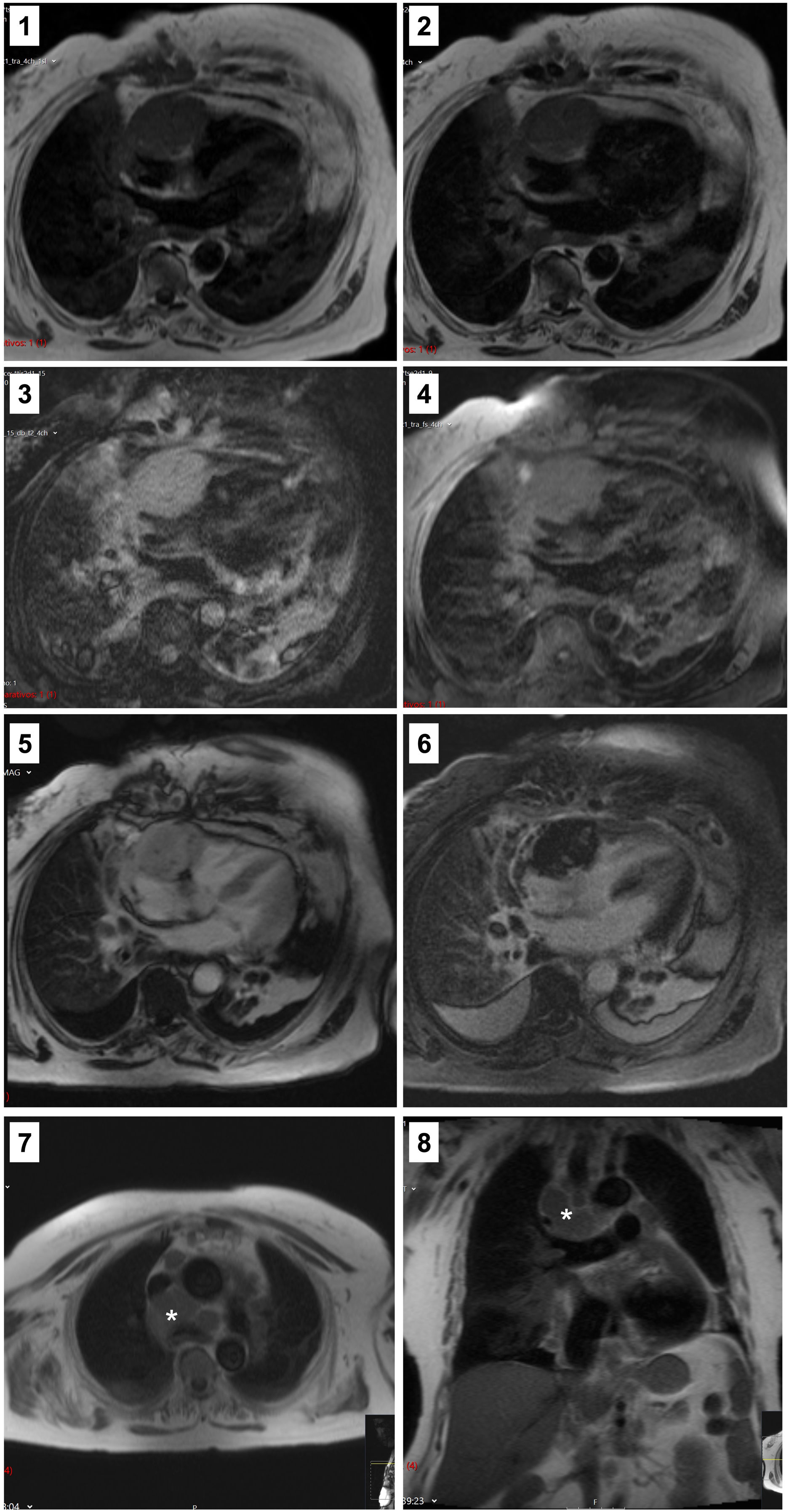A 71-year-old woman was hospitalized for an unexplained fever. A positron emission tomography using PET-18FDG showed increased and diffuse uptake in the pericardium. An MRI revealed a small circumferential pericardial effusion and slight pericardial thickening over the right lateral side of the heart (Video 1, CINE sequences). The patient was discharged after the fever resolved. Some months later, she started having symptoms of exertional dyspnea and a dry cough. A CT raised concerns about a pericardial mass and multiple adenopathies. Reassessment by MRI showed a cardiac mass (84 mm×48 mm) with irregular borders in the right atrioventricular sulcus extending throughout the free wall of the right atrium (Video 2, CINE sequences). It was isointense on T1 (Panel, Image 1) and T2 (Panel, Image 2), hyperintense on T2 STIR (Panel, Image 3), and did not saturate in the fat saturation sequences (Panel, Image 4). It perfused on the first contrast passage (Video 2, perfusion sequences), with hypointense foci on early enhancement sequences (Panel, Image 5) and with a heterogeneous appearance on late enhancement sequences (Panel, Image 6). Exuberant adenopathy conglomerates were observed (Panel, Images 7 and 8, asterisk). A biopsy of an axillary lymph node revealed diffuse large B-cell lymphoma and chemotherapy was started.
Panel exhibiting the cardiac mass characteristics on cardiac magnetic resonance imaging sequences. Image 1: T1 sequence. Image 2: T2 sequence. Image 3: T2 STIR sequence. Image 4: Fat saturation sequences. Image 5: Early enhancement sequence. Image 6: Late enhancement sequences. Images 7 and 8: Exuberant adenopathy conglomerates highlighted with an asterisk.
The authors have no conflicts of interest to declare.
The following are the supplementary data to this article:







